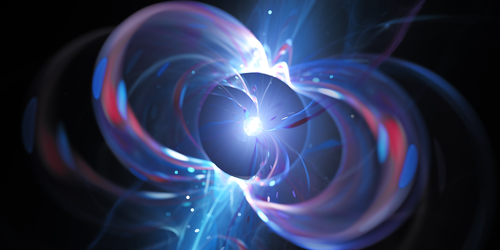A New Type of Neutron Star
In August 2017, gravitational waves and electromagnetic radiation were detected from a pair of colliding neutron stars—corpses of massive stars that violently exploded after running out of fuel (see Viewpoint: Neutron Star Merger Seen and Heard). This discovery revolutionized science’s understanding of neutron star mergers, but uncertainty remains over what form the remnants of such extreme events can take. Now, Arthur Suvorov of Manly Astrophysics, Australia, and Kostas Glampedakis of the University of Murcia, Spain, predict that some of these remnants could be neutron stars of a previously unknown class [1].
Scientists theorize that when two neutron stars collide, a heavier neutron star can emerge from the crash site. It is generally assumed that if the mass of this object is higher than about 2 times that of the Sun, within seconds the object will collapse under gravity to form a black hole. But Suvorov and Glampedakis predict that the remnant neutron star could stave off collapse if a powerful magnetic field is generated in the object’s core during or shortly after the merger. They found that this magnetic field stabilizes the remnant neutron star such that it could survive for a few years before its magnetic field is sufficiently dissipated. The estimated lifetime depends on factors including the strength of the magnetic field and the remnant’s mass and core temperature.
The researchers predict that a “smoking gun” observational signature of such a remnant neutron star would look as follows: short bursts of gamma rays and then x rays when this object initially forms and then a quick flash of radio waves once the object starts to collapse. This signature should be detectable using current equipment.
–Ryan Wilkinson
Ryan Wilkinson is a Corresponding Editor for Physics Magazine based in Durham, UK.
References
- A. G. Suvorov and K. Glampedakis, “Magnetically supramassive neutron stars,” Phys. Rev. D 105, L061302 (2022).




